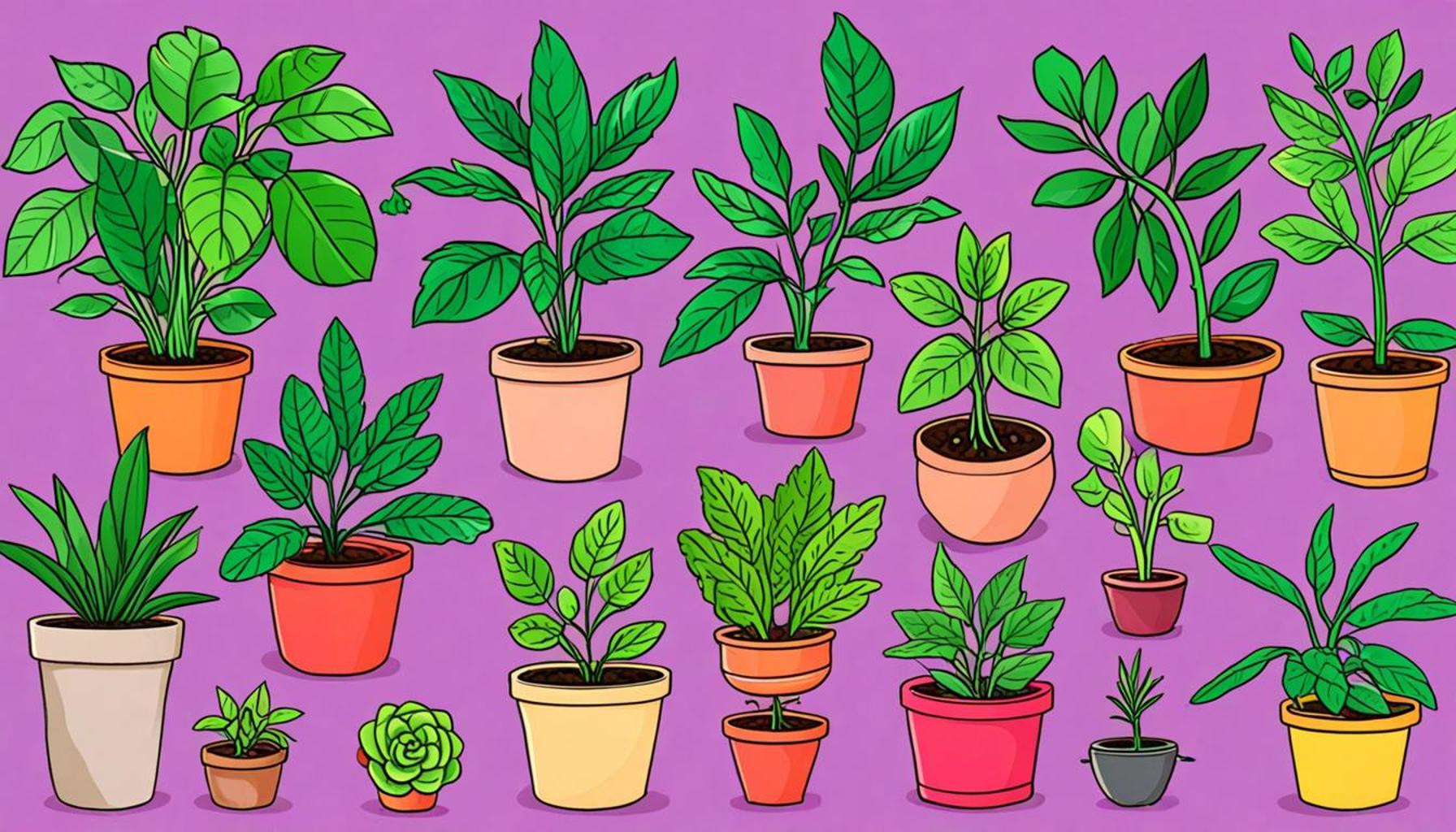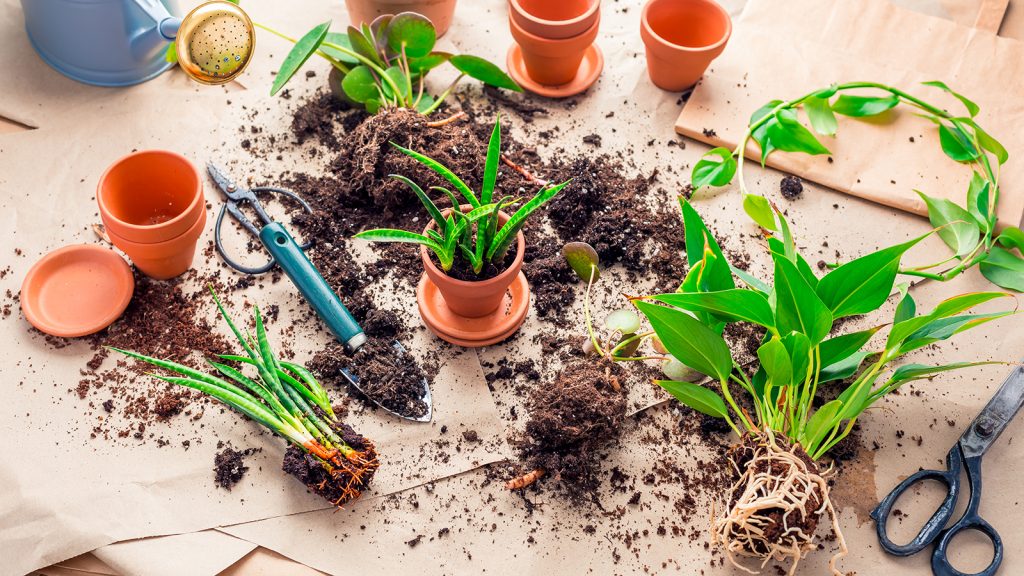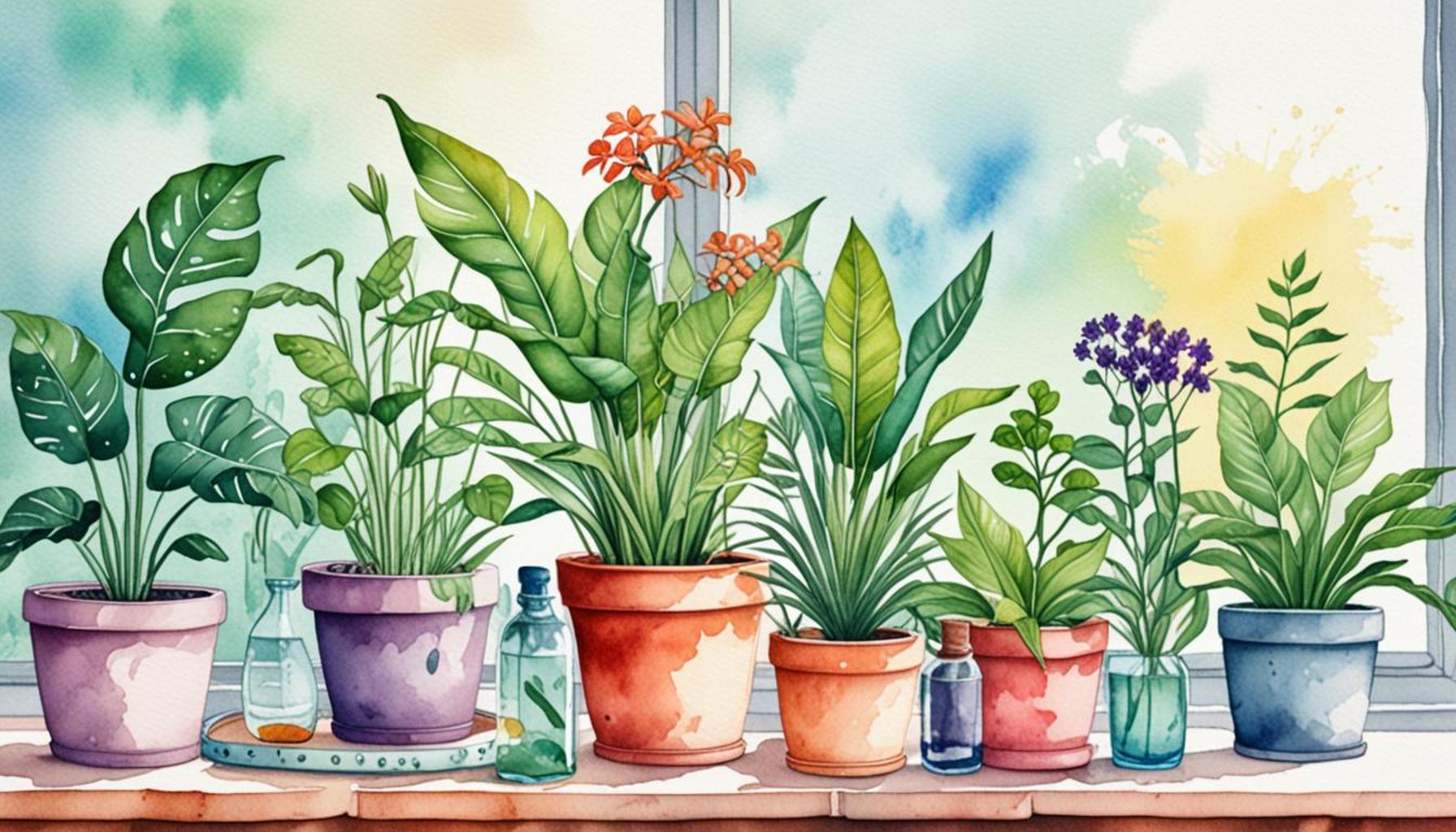Propagation Techniques: How to Select and Grow Plants from Cuttings

Understanding Plant Propagation Techniques
Have you ever wanted to expand your garden without breaking the bank? Propagation from cuttings is one of the most effective and affordable methods to grow new plants. This technique allows you to cultivate multiple plants from a single parent, ensuring your green space flourishes. Whether you’re hoping to fill your home with greenery or create a vibrant outdoor garden, mastering this skill opens doors to endless possibilities.
Understanding how to select and grow plants from cuttings has countless benefits. Consider the following advantages:
- Cost-Effective: Propagation from cuttings saves you money on gardening expenses by eliminating the need to purchase new plants. A simple clipping from an existing plant can grow into a full-fledged specimen, making it easy to expand your garden without straining your budget.
- Variety: This method enables you to replicate your favorite species or experiment with new types. For example, if you adore your friend’s Monstera Deliciosa or want to try your hand at propagating a colorful Coleus, cuttings are the way to go. You can easily diversify your plant collection to suit your aesthetic preferences or gardening style.
- Sustainability: By opting for propagation, you contribute to greener practices in gardening. Rather than purchasing commercial plants that come with plastic pots and potentially harmful pesticides, cuttings encourage a more organic and environmentally-friendly approach to gardening.
Varieties Suitable for Propagation
From succulents to traditional houseplants, a multitude of species can thrive through cuttings. Succulents like Echeveria and Sedum are particularly forgiving, requiring minimal maintenance while providing rapid growth. Other easy-to-propagate plants include pothos, spider plants, and the classic English ivy. Even many flowering species, such as geraniums and begonias, can successfully grow from cuttings.
Techniques and Tools for Success
To ensure your cuttings take root successfully, several key techniques and tools will come in handy. First, consider investing in a sharp pair of pruning shears or scissors to make clean cuts and minimize damage to the plant. A sterile environment is crucial, so clean your tools before use to prevent diseases from transferring to your cuttings.
Once you obtain your cutting, allow it to callous over by placing it in a dry location for a day or two, which helps prevent rot. When ready to plant, choose a well-draining soil mix and provide adequate moisture without overwatering. You can enhance success rates by covering your cutting with a clear plastic bag or using a propagation dome to create a humid environment, mimicking the conditions necessary for rooting.

As you embark on this journey into propagation, the rewards are not limited to the satisfaction of growing new plants. You’ll deepen your knowledge of plant care, develop patience as you nurture your cuttings, and eventually celebrate your thriving garden. Embrace these secrets of propagation, and watch your gardening ambitions flourish!
DISCOVER MORE: Click here to learn about the benefits of organic materials
Choosing the Right Plants for Propagation
Before diving into the art of propagation, it’s essential to understand which plants are suitable for this technique. Not all species respond well to cuttings, and selecting the right candidates can mean the difference between success and failure in your propagation endeavors. Here are some of the most popular plants that thrive when propagated from cuttings:
- Pothos: One of the most forgiving houseplants, pothos can easily root in water or soil. Its cascading vines make for a beautiful display, and it grows rapidly with minimal care.
- Succulents: Variants like Echeveria and Sedum are excellent choices for beginners. Their thick leaves store water, making them resilient during the initial rooting phase.
- Spider Plants: Known for their air-purifying properties, spider plants produce “babies” or offsets that can be easily separated and planted independently.
- Geraniums: Ideal for cheerful garden beds and window boxes, geraniums root quickly and produce vibrant blooms throughout the growing season.
- Herbs: Aromatic herbs like basil and mint can be easily propagated and have the added bonus of providing fresh ingredients for your kitchen. When propagated in water, they root swiftly, providing an endless harvest.
Timing is Everything
Timing plays a crucial role in the success of propagation from cuttings. The best time to take cuttings varies by plant species and climate, but many prefer the warm months of spring and summer when plants are actively growing. During this period, cuttings typically establish roots more quickly due to increased energy and growth hormones in the parent plant.
When selecting your cuttings, look for healthy stems that are free from pests and diseases. Ideally, you want a cutting that is about 4-6 inches long, with at least two or three leaves. Cutting just below a leaf node increases the chances of successful rooting, as this is where new growth is likely to emerge.
Creating an Ideal Environment for Rooting
After selecting the right plants and cuttings, the next step is to create an optimal environment for rooting. For most cuttings, a warm, humid, and well-lit location is ideal. You can enhance the success of your cuttings by taking the following steps:
- Lighting: Place your cuttings in a spot with bright, indirect sunlight to prevent them from drying out while still encouraging photosynthesis.
- Humidity: Maintaining high humidity levels around your cuttings can be achieved by covering them with a plastic bag or using a propagation dome, which can trap moisture and provide a greenhouse-like environment.
- Temperature: Keep your cuttings in a warm environment, ideally between 65°F to 75°F. Too cold of a space can slow down the rooting process.
Establishing these conditions helps to create a nurturing environment for your cuttings, increasing the chances of successful propagation. As you continue this exciting journey and witness the transformations, each successful cutting will bring more joy and fulfillment to your gardening experience.
Propagation Techniques: How to Select and Grow Plants from Cuttings
When it comes to growing new plants, cuttings are one of the most effective and widely used techniques among gardeners and horticulturists. This method not only helps in conserving specific plant characteristics but also is an exciting way to expand your garden without significant investment. Here, we delve deeper into the nuances of selecting and managing plant cuttings effectively.
Choosing the Right Cuttings
Successful propagation starts with selecting the right type of cuttings. Herbaceous cuttings, taken from soft, green stems, are perfect for fast-growing plants like basil or mint. Conversely, woody cuttings, sourced from mature stems, are suitable for more resilient species such as lavender or rosemary. Look for healthy stems free from disease, as these are more likely to take root and thrive.
Preparation Steps
Before planting, it’s vital to prepare the cuttings properly. This involves cutting below a node, as roots are more likely to develop from this part of the stem. Remove lower leaves to minimize moisture loss and dip the cut end in rooting hormone to encourage faster root development. The use of small pots filled with a well-draining medium is highly recommended, as this promotes better aeration and reduces the risk of rot.
Environmental Considerations
Creating a suitable environment for your cuttings is essential for successful rooting. Protect them from direct sunlight and provide adequate humidity by covering the pots with a plastic bag or a propagation dome. This helps in retaining moisture while allowing air circulation. Monitor the cuttings regularly to ensure the medium remains moist but not soggy.
Monitoring Root Development
After a few weeks, check the cuttings for root development. Gently tugging on the cutting will provide feedback; resistance indicates roots are forming, while ease suggests a lack of growth. Once established, the new plants can be gradually acclimated to outdoor conditions before being relocated into your garden or larger pots.By mastering these propagation techniques, you can create a thriving garden filled with diverse plant life, expanding your horticultural repertoire and bringing the joy of gardening to new heights. Explore these methods further to uncover the rich possibilities of plant cuttings and enhance your green thumb!
| Category | Advantages |
|---|---|
| Rooting Success Rate | Higher chance of successful growth from cuttings with proper techniques, leading to more robust plants. |
| Cost-Effective | Propagation from cuttings is a low-cost method compared to buying new plants, saving money for gardeners. |
Implementing these strategies will not only enhance your gardening skills but also contribute to a more sustainable and flourishing garden ecosystem. Keep exploring and experimenting with different plant species through cuttings for a rewarding green experience!
DIVE DEEPER: Click here for effective irrigation techniques
Techniques for Successful Rooting
Once you’ve chosen the right plants for propagation and established an ideal environment, it’s time to delve into the specific techniques that can help your cuttings flourish. While the basic principle of clippings is straightforward, employing effective methods can greatly enhance success rates. Here are some proven strategies that enhance rooting among plant cuttings:
Water Propagation
One of the easiest and most effective methods for propagating cuttings is water propagation. This technique involves placing the cut end of your cutting into a glass of water. Opt for a clear container so you can monitor the progress as roots begin to develop. Here are some detailed steps to consider:
- Change the Water Regularly: To prevent bacterial growth, change the water every few days, ensuring that the cutting remains submerged.
- Root Monitoring: Watch for small white root hairs emerging at the base; once they reach about two to three inches, the cutting is ready for transplanting into soil.
- Ideal Cuttings: As previously mentioned, softwood cuttings from a healthy plant are most successful using this technique.
Popular plants such as pothos and mint respond exceptionally well to water propagation, making this method accessible for beginners and experienced gardeners alike.
Soil Propagation
If you prefer a more traditional approach, soil propagation is also an effective technique. Here are steps to properly propagate cuttings in soil:
- Rooting Medium: Use a light, well-draining mixture. Mixing potting soil with perlite or sand can improve aeration and drainage.
- Planting Depth: Insert the cutting deep enough in the soil, so that at least one leaf node is below the surface — this is crucial for root development.
- Watering: Water the cuttings lightly right after planting. Ensure that the soil is moist but not soggy. Soil that is too wet can lead to rot.
Plants like geraniums and spider plants thrive in `soil propagation`, utilizing nutrients better found in soil as they establish roots.
Using Hormone Rooting Powder
For those interested in maximizing their chances of success, using a rooting hormone can be particularly beneficial. Rooting hormones contain auxins, which encourage root growth. Here’s how to incorporate it:
- Preparation: Dip the cut end of the cutting into water, then into the rooting hormone powder. Shake off any excess to avoid clumping.
- Application: Place the treated cutting directly into the prepared soil mix in a pot.
- Observation: Monitor the cutting closely after application, ensuring the environment stays moist and warm, as rooting hormones can speed up the process.
While not mandatory, hormone powders can be especially helpful for more challenging species like some woody plants or those that generally root more slowly. By taking these specific measures, you empower your cuttings to overcome hurdles and establish lasting roots.
Pest and Disease Management
As your cuttings begin to root, it’s critical to watch for any signs of pests or diseases. A healthy, thriving cutting can fall victim to common pests like aphids or whiteflies. Here are preventive measures to considered:
- Cleanliness: Start with clean tools and containers to minimize the risk of disease.
- Air Circulation: Ensure adequate air circulation around your cuttings to discourage fungi and pests.
- Regular Checks: Inspect cuttings frequently for signs of trouble; early detection can prevent loss.
With vigilance and care, your cuttings can flourish into lush new plants, expanding your garden or indoor space beautifully.
CHECK OUT: Click here to discover tips for keeping your products fresh longer
Conclusion
In summary, the art of plant propagation through cuttings is a rewarding venture that not only enhances your gardening repertoire but also contributes to sustainable practices. By selecting suitable plants for propagation and utilizing proven methods such as water propagation, soil propagation, and the application of rooting hormones, you set the stage for healthy root development and vibrant new growth. Each technique offers unique advantages; for instance, water propagation provides a visible growth process, while soil propagation taps into nature’s nutrient-rich environment.
As you embark on your propagation journey, remember that patience and observation are key. Monitoring your cuttings for signs of roots or potential pests equates to nurturing a thriving green space. Furthermore, ensuring optimal conditions—such as the right moisture levels and air circulation—can drastically improve your success rates.
With practice, even novice gardeners can grow an impressive variety of plants from cuttings, expanding their indoor and outdoor spaces affordably. Beyond just growing new plants, this practice fosters a deeper connection to nature and encourages a sense of accomplishment. So grab your shears and experiment with different techniques; who knows, you may discover your next favorite houseplant or garden treasure. For those passionate about plants, the world of propagation offers endless potential. Embrace it and watch your botanical dreams bloom!


